Archive
CBS ColecoVision Secam alternative RGB pinouts from ColecoVision.dk
 CBS ColecoVision RGB pinouts only for the French (Secam) AV Out version.
CBS ColecoVision RGB pinouts only for the French (Secam) AV Out version.
Here my first ColecoVision RGB hack.
source: colecovision.dk
Macintosh Plus 1mb
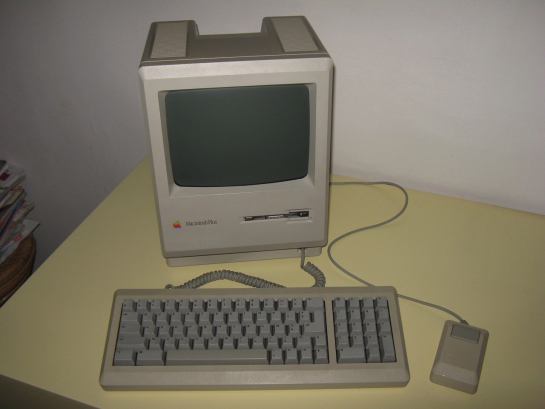
Autopsy:
from Wikipedia:
The Macintosh Plus computer was the third model in the Macintosh line, introduced on January 16, 1986, two years after the original Macintosh and a little more than a year after the Macintosh 512K, with a price tag of 2599 USD. As an evolutionary improvement over the 512K, it introduced RAM expansion from 1 MB to 4 MB, and the SCSI peripheral bus, among smaller improvements. It originally had the same generally beige-colored case as the original Macintosh (“Pantone 453″), but in 1987, the case color was changed to the long-lived, warm gray “Platinum” color.
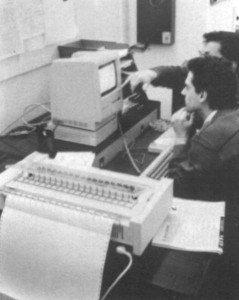 Introduced as the Macintosh Plus, it was the first Macintosh model to include a SCSI port, which launched the popularity of external SCSI devices for Macs, including hard disks, tape drives, CD-ROM drives, printers, and even monitors.
Introduced as the Macintosh Plus, it was the first Macintosh model to include a SCSI port, which launched the popularity of external SCSI devices for Macs, including hard disks, tape drives, CD-ROM drives, printers, and even monitors.
Its SCSI implementation was engineered shortly before the initial SCSI spec was finalized and, as such, is not 100% SCSI-compliant. As the Mac Plus had no provision at all for expansion other than the SCSI bus, the entire onus of expansion was on the user.
This usually made it very expensive. SCSI ports remained standard equipment for all Macs until the introduction of the iMac in 1998. The Macintosh Plus was the last classic Mac to have a phone cord-like port on the front of the unit for the keyboard, as well as the DE-9 connector for the mouse; later models would use ADB ports.
source: wikipedia
Monitor Commodore 1084
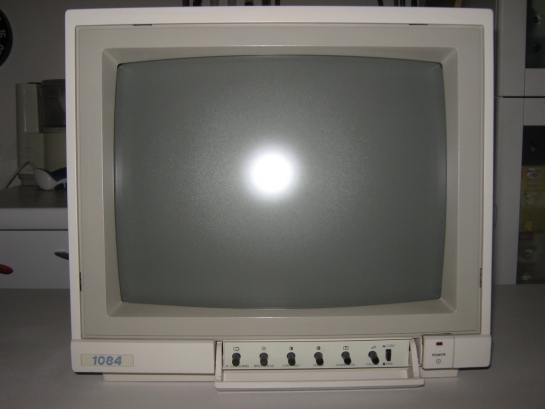
Autopsy:
from C64-Wiki:
The Commodore 1084, which was originally developed for the Amiga, is a very good colour monitor for the Commodore 64. With its many ports it can be used for connecting to many home and personal computers and can also be connected to video recorders, picture record players and TV tuners.
The Commodore 1084 has a good, sharp picture with luscious colours. All the important settings can be changed over regulators art the front or the back. While the 1084 only plays mono, the modell Commodore 1084S can also play stereo. Due to its good price performance ratio the 1084 was (and still is) very popular.
Download: Commodore 1084 Service Manual (2001)
source: c64-wiki.com
Xilinx CPLD XC9536 replacement PLA for Commodore 64
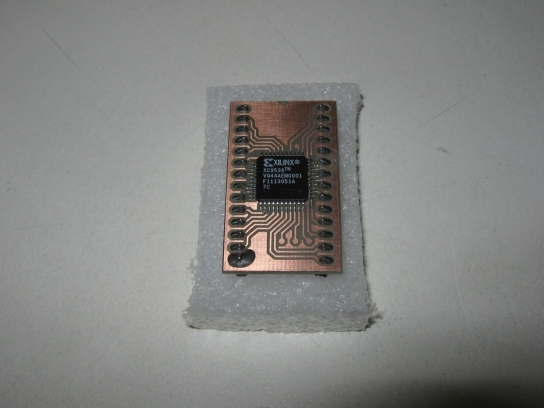
Autopsy:
The PLA chip (906114-01) used in the Commodore C64 is a generic 82S100 gate array with custom programming.
Its logic functions were dumped and reverse engineered by the community and are available from a variety of sources. This PLA uses the Xilinx CPLD XC9536 to emulate perfectly the PLA of the Commodore 64.
Download: Xilinx CPLD XC9536 JED C64 PLA + Eagle (2151)
source: zonadepruebas.com
Some Coleco Vision Games Cartridges with Instructions
Cartridges list:
- BurgerTime by Data East U.S.A.
- Rocky Super Action Boxing by United Artists Corporation + Joystick Sticker.
- WarGames by United Artists Corporation + Joystick Sticker.
- Buck Rogers by The Dille Family Trust.
click here for the CBS Coleco Vision category.
Atari Paddle
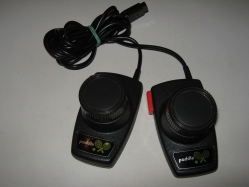
from Wikipedia:
A paddle is a game controller with a round wheel and one or more fire buttons, where the wheel is typically used to control movement of the player object along one axis of the video screen. A paddle controller rotates through a fixed arc (usually about 330 degrees); it has a stop at each end.
The paddle wheel is usually mechanically coupled to a potentiometer, so as to generate an output voltage level varying with the wheel’s angle relative to a fixed reference position. A paddle is thus an absolute position controller. That is, without any previous knowledge, the sensor can be read and the result directly indicates the position of the paddle knob. This is in contrast to a quadrature encoder-based device or “spinner”.
source: wikipedia
Commodore Vic 20 yellowed but in very good conditions
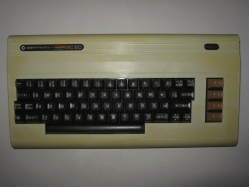
Autopsy:
from Wikipedia:
The VIC-20 (Germany: VC-20; Japan: VIC-1001) is an 8-bit home computer which was sold by Commodore Business Machines. The VIC-20 was announced in 1980, roughly three years after Commodore’s first personal computer, the PET. The VIC-20 was the first computer of any description to sell one million units.
The VIC-20 was intended to be more economical than the PET computer. It was equipped with only 5 KB of RAM (of this, only 3583 Bytes were available to the user) and used the same MOS 6502 CPU as the PET. The VIC-20′s video chip, the MOS Technology VIC, was a general-purpose color video chip designed by Al Charpentier in 1977 and intended for use in inexpensive display terminals and game consoles, but Commodore couldn’t find a market for the chip. As the Apple II gained momentum with the advent of VisiCalc in 1979, Jack Tramiel wanted a product that would compete in the same segment, to be presented at the January 1980 CES. For this reason Chuck Peddle and Bill Seiler started to design a computer named TOI (The Other Intellect).
The TOI computer failed to materialize, mostly due to the fact that it required an 80-column character display which in turn required the MOS Technology 6564 chip. However, the chip could not be used in the TOI since it required very expensive static RAM to operate fast enough. In the meantime, freshman engineer Robert Yannes at MOS Technology (then a part of Commodore) had designed a computer in his home dubbed the MicroPET and finished a prototype with some help from Al Charpentier and Charles Winterble.
With the TOI unfinished, when Jack Tramiel was confronted with the MicroPET prototype, he immediately said he wanted it to be finished and ordered it to be mass-produced following a limited demonstration at the CES.
source: wikipedia
Some Pocket Electronics calculators
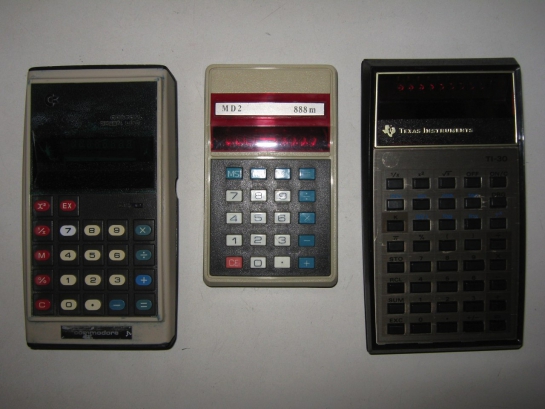
Autopsy:
Short Description:
- Commodore GL-979D (1975) – 7 Digit green VFD.
- MD2 888m (1976) – 8 Digit red LED.
- Texas Instruments TI-30 (1976) – 8 Digit red LED.
source: mycalcdb.free.fr
Atari 1040 STf TOS Eprom Upgrade v1.04
Atari ST replace Epson broken Floppy Drive with a Teac FD235 HF
Atari 1040 STf with Mouse, RGB Cable and User Manual
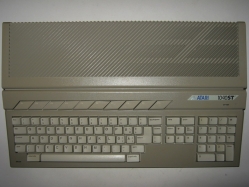
Autopsy:
from Wikipedia:
The Atari ST is a home/personal computer that was commercially available from 1985 to the early 1990s. It was released by Atari Corporation in 1985. The “ST” officially stands for “Sixteen/Thirty-two”, which referred to the Motorola 68000′s 16-bit external bus and 32-bit internals.
The Atari ST was part of the 16/32 bit generation of home computers, based on the Motorola 68000 CPU, with 512 KB of RAM or more, and 3½” single density double sided floppy disks as storage (nominally 720KB). It was similar to other contemporary machines which used the Motorola 68000, the Apple Macintosh and the Commodore Amiga. Although the Macintosh was the first widely available computer with a graphical user interface (GUI), it was limited to a monochromatic display on a smaller built-in monitor.
Preceding the Amiga’s commercial release by almost two months, the Atari ST was the first computer to come with a fully bit-mapped color GUI, using a version of Digital Research’s GEM released that February. It was also the first home computer with integrated MIDI support.
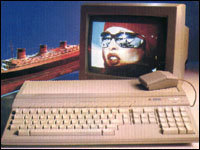 The ST was primarily a competitor to the Apple Macintosh and the Commodore Amiga systems. This platform rivalry was often reflected by the owners and was most prominent in the Demo Scene. Where the Amiga had custom processors which gave it the edge in the games and video market, the ST was generally cheaper, had a slightly faster CPU, and had a high-resolution monochrome display mode, ideal for business and CAD.
The ST was primarily a competitor to the Apple Macintosh and the Commodore Amiga systems. This platform rivalry was often reflected by the owners and was most prominent in the Demo Scene. Where the Amiga had custom processors which gave it the edge in the games and video market, the ST was generally cheaper, had a slightly faster CPU, and had a high-resolution monochrome display mode, ideal for business and CAD.
Thanks to its built-in MIDI ports it enjoyed success as a music sequencer and controller of musical instruments among amateurs and professionals alike, being used in concert by bands such as Tangerine Dream, Fatboy Slim and 90s UK dance act 808 State. In some markets, particularly Germany, the machine gained a strong foothold as a small business machine for CAD and Desktop publishing work.
The ST was later superseded by the Atari TT and Falcon computers. Since Atari pulled out of the computer market there has been a market for powerful TOS-based machines (clones). Like most “retro” computers the Atari enjoys support in the emulator scene.
source: wikipedia atari-forum
ColecoVision Roller Controller
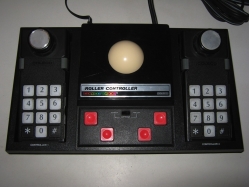
Autopsy:
from Wikipedia:
Coleco prototyped a fourth expansion module intended to provide compatibility with Mattel’s Intellivision, but this was never released.
Two controller expansions were also available. First was the Roller Controller, a trackball packaged with a port of the arcade game Slither, a Centipede clone and meant to be used with some dedicated games like Victory or to enhance the gameplay of previously published cartridges which benefitted from its trackball system (like Wargames).
The second was the Super Action Controller Set, resembling a pair of boxing gloves each with joystick and numeric keypad on top and a series of buttons along the grip. It came with the game Super Action Baseball and saw later release of the Rocky Super Action Boxing, and a port of Front Line.
source: wikipedia
ColecoVision Super Action Controller

Autopsy:
from Vintagecomputing:
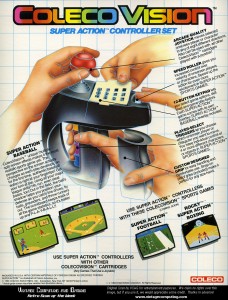 And you thought video game controllers were over-complicated these days; this one requires five (slightly-pudgy child) hands just to use it properly.
And you thought video game controllers were over-complicated these days; this one requires five (slightly-pudgy child) hands just to use it properly.
Take a look at this bad boy: four trigger buttons on the pistol-like grip (one per finger), twelve buttons in the overlay-friendly numeric keypad matrix on top, a one-dimensional “speed roller” wheel near the back, and an extremely flaccid red-knobbed joystick crowning it all.
Combine this with the futuristic look of a gaudy black space gauntlet that literally engulfs your hand, and you’ve got the ColecoVision Super Action Controller.
This marvel of controlling technology came in sets of two with a “Super Action Game” included — Super Action Baseball or Rocky Super Action Boxing.
source: vintagecomputing.com
Some Coleco Vision Games Cartridges
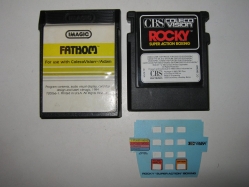
Cartridges list:
- Fathom by Imagic.
- Rocky Super Action Boxing by United Artists Corporation + Joystick Sticker.
click here for the CBS Coleco Vision category.
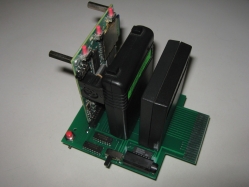



























































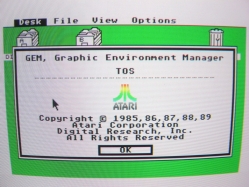






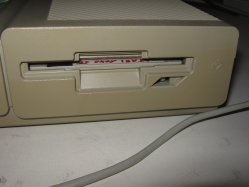























































Recent Comments